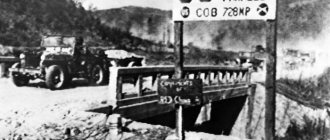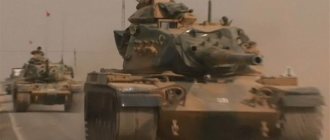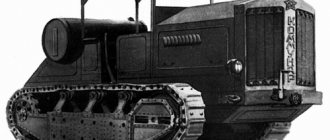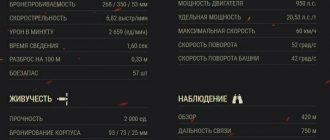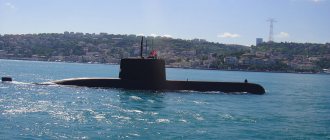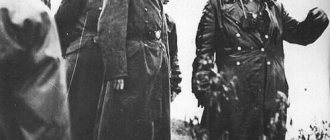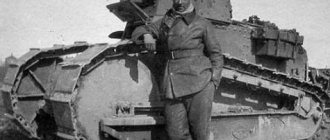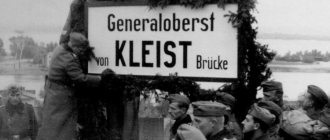Modern battle tanks of Russia and the world photos, videos, pictures watch online. This article gives an idea of the modern tank fleet. It is based on the principle of classification used in the most authoritative reference book to date, but in a slightly modified and improved form. And if the latter in its original form can still be found in the armies of a number of countries, then others have already become museum pieces. And just for 10 years! The authors considered it unfair to follow in the footsteps of the Jane's reference book and not consider this combat vehicle (very interesting in design and fiercely discussed in its time), which formed the basis of the tank fleet of the last quarter of the 20th century.
Films about tanks where there is still no alternative to this type of weapon for the ground forces. The tank was and will probably remain a modern weapon for a long time due to its ability to combine such seemingly contradictory qualities as high mobility, powerful weapons and reliable crew protection. These unique qualities of tanks continue to be constantly improved, and the experience and technology accumulated over decades predetermine new frontiers in combat properties and achievements of the military-technical level. In the eternal confrontation between “projectile and armor”, as practice shows, protection against projectiles is increasingly being improved, acquiring new qualities: activity, multi-layeredness, self-defense. At the same time, the projectile becomes more accurate and powerful.
Russian tanks are specific in that they allow you to destroy the enemy from a safe distance, have the ability to make quick maneuvers on off-road, contaminated terrain, can “walk” through territory occupied by the enemy, seize a decisive bridgehead, cause panic in the rear and suppress the enemy with fire and tracks . The war of 1939-1945 became the most difficult test for all humanity, since almost all countries of the world were involved in it. It was a clash of the titans - the most unique period that theorists debated in the early 1930s and during which tanks were used in large numbers by almost all belligerents. At this time, a “test for lice” and a deep reform of the first theories of the use of tank forces took place. And it is the Soviet tank forces that are most affected by all this.
Tanks in battle have become a symbol of the past war, the backbone of the Soviet armored forces? Who created them and under what conditions? How did the USSR, which had lost most of its European territories and had difficulty recruiting tanks for the defense of Moscow, was able to release powerful tank formations onto the battlefields already in 1943? This book is intended to answer these questions, telling about the development of Soviet tanks “in the days of testing ", from 1937 to the beginning of 1943. When writing the book, materials from Russian archives and private collections of tank builders were used. There was a period in our history that remained in my memory with some kind of depressing feeling. It began with the return of our first military advisers from Spain, and only stopped at the beginning of forty-three,” said former general designer of self-propelled guns L. Gorlitsky, “some kind of pre-storm state was felt.
Tanks of the Second World War It was M. Koshkin, almost underground (but, of course, with the support of “the wisest of the wise leaders of all nations”), who was able to create the tank that a few years later would shock the German tank generals. And not only that, he not only created it, the designer managed to prove to these foolish military men that it was his T-34 that they needed, and not just another wheeled-tracked “motor vehicle.” The author is in slightly different positions, which were formed after becoming acquainted with the pre-war documents of the Russian State Military Academy and the Russian State Academy of Economics. Therefore, working on this segment of the history of the Soviet tank, the author will inevitably contradict something “generally accepted.” This work describes the history of Soviet tank building in the most difficult years - from the beginning of a radical restructuring of the entire activity of design bureaus and people's commissariats in general, during the frantic race to equip new tank formations of the Red Army, the transfer of industry to wartime rails and evacuation.
Tanks Wikipedia, the author would like to express his special gratitude to M. Kolomiets for his assistance in selecting and processing materials, and also thank A. Solyankin, I. Zheltov and M. Pavlov, the authors of the reference publication “Domestic Armored Vehicles. XX century 1905 – 1941″, since this book helped to understand the fate of some projects that was previously unclear. I would also like to remember with gratitude those conversations with Lev Izraelevich Gorlitsky, the former chief designer of UZTM, which helped to take a fresh look at the entire history of the Soviet tank during the Great Patriotic War of the Soviet Union. For some reason today it is common for us to talk about 1937-1938. only from the point of view of repression, but few people remember that it was during this period that those tanks were born that became legends of the wartime...” From the memoirs of L.I. Gorlinkogo.
Soviet tanks, a detailed assessment of them at that time was heard from many lips. Many old people recalled that it was from the events in Spain that it became clear to everyone that the war was getting closer and closer to the threshold and it was Hitler who would have to fight. In 1937, mass purges and repressions began in the USSR, and against the backdrop of these difficult events, the Soviet tank began to transform from “mechanized cavalry” (in which one of its combat qualities was emphasized at the expense of others) into a balanced combat vehicle, simultaneously possessing powerful weapons, sufficient to suppress most targets, good maneuverability and mobility with armor protection capable of maintaining its combat effectiveness when fired upon by the most massive anti-tank weapons of a potential enemy.
It was recommended that large tanks be supplemented with only special tanks - amphibious tanks, chemical tanks. The brigade now had 4 separate battalions of 54 tanks each and was strengthened by moving from three-tank platoons to five-tank ones. In addition, D. Pavlov justified the refusal to form three additional mechanized corps in addition to the four existing mechanized corps in 1938, believing that these formations were immobile and difficult to control, and most importantly, they required a different rear organization. The tactical and technical requirements for promising tanks, as expected, were adjusted. In particular, in a letter dated December 23 to the head of the design bureau of plant No. 185 named after. CM. Kirov, the new boss demanded that the armor of the new tanks be strengthened so that at a distance of 600-800 meters (effective range).
The newest tanks in the world, when designing new tanks, it is necessary to provide for the possibility of increasing the level of armor protection during modernization by at least one stage...” This problem could be solved in two ways: Firstly, by increasing the thickness of the armor plates and, secondly, by “using increased armor resistance." It is not difficult to guess that the second way was considered more promising, since the use of specially strengthened armor plates, or even two-layer armor, could, while maintaining the same thickness (and the mass of the tank as a whole), increase its durability by 1.2-1.5 times. It was this path (the use of especially hardened armor) that was chosen at that moment for the creation of new types of tanks.
Tanks of the USSR at the dawn of tank production, armor was most widely used, the properties of which were identical in all areas. Such armor was called homogeneous (homogeneous), and from the very beginning of armor making, craftsmen sought to create just such armor, because homogeneity ensured stability of characteristics and simplified processing. However, at the end of the 19th century, it was noticed that when the surface of an armor plate was saturated (to a depth of several tenths to several millimeters) with carbon and silicon, its surface strength increased sharply, while the rest of the plate remained viscous. This is how heterogeneous (non-uniform) armor came into use.
For military tanks, the use of heterogeneous armor was very important, since an increase in the hardness of the entire thickness of the armor plate led to a decrease in its elasticity and (as a consequence) to an increase in fragility. Thus, the most durable armor, all other things being equal, turned out to be very fragile and often chipped even from the explosions of high-explosive fragmentation shells. Therefore, at the dawn of armor production, when producing homogeneous sheets, the task of the metallurgist was to achieve the maximum possible hardness of the armor, but at the same time not to lose its elasticity. Surface-hardened armor with carbon and silicon saturation was called cemented (cemented) and was considered at that time a panacea for many ills. But cementation is a complex, harmful process (for example, treating a hot plate with a jet of illuminating gas) and relatively expensive, and therefore its development in a series required large expenses and improved production standards.
Wartime tanks, even in operation, these hulls were less successful than homogeneous ones, since for no apparent reason cracks formed in them (mainly in loaded seams), and it was very difficult to put patches on holes in cemented slabs during repairs. But it was still expected that a tank protected by 15-20 mm cemented armor would be equivalent in level of protection to the same one, but covered with 22-30 mm sheets, without a significant increase in weight. Also, by the mid-1930s, tank building had learned to harden the surface of relatively thin armor plates by uneven hardening, known since the end of the 19th century in shipbuilding as the “Krupp method.” Surface hardening led to a significant increase in the hardness of the front side of the sheet, leaving the main thickness of the armor viscous.
How tanks fire video up to half the thickness of the slab, which was, of course, worse than cementation, since while the hardness of the surface layer was higher than with cementation, the elasticity of the hull sheets was significantly reduced. So the “Krupp method” in tank building made it possible to increase the strength of armor even slightly more than cementation. But the hardening technology that was used for thick naval armor was no longer suitable for relatively thin tank armor. Before the war, this method was almost not used in our serial tank building due to technological difficulties and relatively high cost.
Combat use of tanks The most proven tank gun was the 45-mm tank gun model 1932/34. (20K), and before the event in Spain it was believed that its power was quite sufficient to perform most tank tasks. But the battles in Spain showed that a 45-mm gun can only satisfy the task of fighting enemy tanks, since even shelling of manpower in the mountains and forests turned out to be ineffective, and it was only possible to disable a dug-in enemy firing point in the event of a direct hit . Firing at shelters and bunkers was ineffective due to the low high-explosive effect of a projectile weighing only about two kg.
Types of tanks photos so that even one shell hit can reliably disable an anti-tank gun or machine gun; and thirdly, to increase the penetrating effect of a tank gun on the armor of a potential enemy, since using the example of French tanks (which already had an armor thickness of about 40-42 mm), it became clear that the armor protection of foreign combat vehicles tends to be significantly strengthened. There was a sure way for this - increasing the caliber of tank guns and simultaneously increasing the length of their barrel, since a long gun of a larger caliber fires heavier projectiles with a higher initial velocity over a greater distance without correcting the aiming.
The best tanks in the world had a large-caliber gun, also had a larger breech, significantly greater weight and increased recoil reaction. And this required an increase in the mass of the entire tank as a whole. In addition, placing large-sized rounds in a closed tank volume led to a decrease in transportable ammunition. The situation was aggravated by the fact that at the beginning of 1938 it suddenly turned out that there was simply no one to give the order for the design of a new, more powerful tank gun. P. Syachintov and his entire design team were repressed, as well as the core of the Bolshevik design bureau under the leadership of G. Magdesiev. Only the group of S. Makhanov remained in the wild, who, since the beginning of 1935, had been trying to develop his new 76.2-mm semi-automatic single gun L-10, and the staff of Plant No. 8 was slowly finishing the “forty-five.”
Photos of tanks with names The number of developments is large, but mass production in the period 1933-1937. Not a single one has been accepted..." In fact, none of the five air-cooled tank diesel engines that were worked on in 1933-1937. in the engine department of plant No. 185, was not brought to series. Moreover, despite decisions at the highest levels to switch tank building exclusively to diesel engines, this process was constrained by a number of factors. Of course, diesel had significant efficiency. It consumed less fuel per unit of power per hour. Diesel fuel is less susceptible to fire, since the flash point of its vapors was very high.
New tanks video, even the most advanced of them, the MT-5 tank engine, required a reorganization of engine production for serial production, which was expressed in the construction of new workshops, the supply of advanced foreign equipment (they did not yet have their own machines of the required accuracy), financial investments and strengthening of personnel. It was planned that in 1939 this diesel would produce 180 hp. will go to production tanks and artillery tractors, but due to investigative work to determine the causes of tank engine failures, which lasted from April to November 1938, these plans were not implemented. The development of a slightly increased six-cylinder gasoline engine No. 745 with a power of 130-150 hp was also started.
Brands of tanks had specific indicators that suited tank builders quite well. The tanks were tested using a new method, specially developed at the insistence of the new head of the ABTU, D. Pavlov, in relation to combat service in wartime. The basis of the tests was a run of 3-4 days (at least 10-12 hours of daily non-stop movement) with a one-day break for technical inspection and restoration work. Moreover, repairs were allowed to be carried out only by field workshops without the involvement of factory specialists. This was followed by a “platform” with obstacles, “swimming” in water with an additional load that simulated an infantry landing, after which the tank was sent for inspection.
Super tanks online, after improvement work, seemed to remove all claims from the tanks. And the general progress of the tests confirmed the fundamental correctness of the main design changes - an increase in displacement by 450-600 kg, the use of the GAZ-M1 engine, as well as the Komsomolets transmission and suspension. But during testing, numerous minor defects again appeared in the tanks. Chief designer N. Astrov was removed from work and was under arrest and investigation for several months. In addition, the tank received a new turret with improved protection. The modified layout made it possible to place on the tank more ammunition for a machine gun and two small fire extinguishers (previously there were no fire extinguishers on small tanks of the Red Army).
US tanks as part of modernization work, on one production model of the tank in 1938-1939. The torsion bar suspension developed by the designer of the design bureau of plant No. 185 V. Kulikov was tested. It was distinguished by the design of a composite short coaxial torsion bar (long monotorsion bars could not be used coaxially). However, such a short torsion bar did not show good enough results in tests, and therefore the torsion bar suspension did not immediately pave the way for itself in the course of further work. Obstacles to be overcome: climbs of at least 40 degrees, vertical wall 0.7 m, covered ditch 2-2.5 m."
YouTube about tanks, work on the production of prototypes of D-180 and D-200 engines for reconnaissance tanks is not being carried out, jeopardizing the release of prototypes.” Justifying his choice, N. Astrov said that the wheeled-tracked non-floating reconnaissance aircraft (factory designation 101 or 10-1), as well as the amphibious tank variant (factory designation 102 or 10-2), are a compromise solution, since they satisfy the requirements ABTU is not fully possible. Option 101 was a tank weighing 7.5 tons with a hull-type hull, but with vertical side sheets of cemented armor 10-13 mm thick, since: “The inclined sides, causing serious weighting of the suspension and hull, require significant (up to 300 mm) widening hull, not to mention the increased complexity of the tank.
Video reviews of tanks in which the tank’s power unit was planned to be based on the 250-horsepower MG-31F aircraft engine, which was being developed by industry for agricultural aircraft and gyroplanes. 1st grade gasoline was placed in the tank under the floor of the fighting compartment and in additional onboard gas tanks. The armament fully corresponded to the task and consisted of coaxial machine guns DK 12.7 mm caliber and DT (in the second version of the project even ShKAS is listed) 7.62 mm caliber. The combat weight of the tank with torsion bar suspension was 5.2 tons, with spring suspension - 5.26 tons. Tests took place from July 9 to August 21 according to the methodology approved in 1938, with special attention being paid to tanks.
Turkish tank "Altai"
A whole team of specialists took on the production of the vehicle so that the Turkish Altai tank was brought to perfection. In 2011, the whole world was able to see what the equipment was like, which decided to replace all the German and American ones in its composition at once. $500,000,000 was spent on its production and development. The first samples created for testing were equipped with German diesel engines, but when their mass production begins in 2022, the engines will be Turkish. There is not even specific data yet, but Qatar has already signed a contract for the purchase of these machines. Here's what is known about the Turkish Altai tank .
- Weight: 60 t
- Gun: 120 mm (MKEK120)
- Barrel length: 55 cal.
- Power: 1500 hp
- Speed: 70 km/h
- Power reserve: 500 km
- Crew: 4 people
Leopard 1A3
Studying Turkish tanks in service, it begins to seem that they collected vehicles of different calibers and performance. For example, at least 200 Leopard 1A3 units are still in active service. This version has too few differences from the original; the Germans churned out the series, but there were no significant differences. For example, this vehicle, part of the Turkish tanks, received a new welded turret and commander’s trailer.
- Weight: 42.4 t
- Gun: 105 mm (L7A3)
- Barrel length: 56 cal.
- Power: 830 hp
- Speed: 62 km/h
- Power reserve: 600 km
- Crew: 4 people
M60A1
Turkey is in no hurry to leave the army of this country, the old m60 tank , which Turkey does not want to give up completely. This first version of the American legend was produced from 1962 to 1968. Their whole problem is their poor security compared to modern weapons. The hull is armored to only 10.9 cm, and the turret is 25.4 cm. The only thing it is good at even today is overcoming water with a depth of up to 2.4 meters.
- Weight: 46.2 t
- Gun: 105 mm (M68)
- Barrel length: 50.2 cal.
- Power: 750 hp
- Speed: 48 km/h
- Cruising range: 480 km
- Crew: 4 people
M60A3
These are one of the many vehicles that are included in Turkish tanks in service as of today. The modernized version, which appeared in 1988, belongs to medium tanks and is already equipped with mounted dynamic protection. In addition, the Americans changed the fire control system and much more, but all in small ways. As a result, in some armies of the world it has a significant advantage.
- Weight: 46.2 t
- Gun: 105 mm (M68)
- Barrel length: 50.2 cal.
- Power: 750 hp
- Speed: 48 km/h
- Cruising range: 480 km
- Crew: 4 people
[ads-pc-2]
[ads-mob-1]
Leopard 2A4
One of the most widespread modifications of the main battle German tank. The Leopard 2A4 now has more reliable armor that perfectly protects the hull and turret. This was exactly what was in the minds of the engineers, to improve the survivability of the crew and approximately all the emphasis was placed specifically on the turret. As for the weapons, the changes did not affect them, except that more powerful shells were introduced into the ammunition load. By increasing the armor accordingly, the weight was increased.
- Weight: 55 t
- Gun: 120 mm (Rheinmetall Rh-120)
- Barrel length: 55 cal.
- Power: 1500 hp
- Speed: 72 km/h
- Power reserve: 550 km
- Crew: 4 people
M48A5 T1/T2
This is the original M48 model, but created for Turkish tanks , a special version. The only thing the manufacturers added was a thermal imager. Named the Patton 48, it became a 1952 project, but a naturally modernized version for the Turkish Army came out much later. Its power reserve is far from perfect and is not even close to the main modern combat vehicles.
- Weight: 44.8 t
- Gun: 90 mm (M41)
- Power: 704 hp
- Speed: 45 km/h
- Power reserve: 110 km
- Crew: 4 people
M60T Sabra
There is another modernized tank m60 Turkey , which is not going to be written off. This project became a joint development with Israel in the early 2000s. The design and many structural elements were taken from the base, but tried to improve the power plant and protection. As a result of deep processing and improvements, 170 units of this equipment were delivered to Turkey. With the arrival of Sabra, the army managed to abandon guns with a caliber of 105 mm, because there was already a full-fledged 120 mm one. Also, the model received dynamic protection, a thermal imager, a more powerful engine and a machine gun on the roof.
- Weight: 59 t
- Gun: 120 mm (MG253)
- Power: 1000 hp
- Speed: 55 km/h
- Power reserve: 450 km
- Crew: 4 people
Leopard 1A4
This modernization option, known to everyone much more than its predecessors, is no less popular among the tanks of the Turkish army. The engineers worked through all the options and again improved the tower’s protection; to do this, they had to reconsider the design of the applied elements. The tank commanders were given even more electronics and, therefore, increased the mass of the combat vehicle, which is included in Turkish tanks in service today. It was also possible to increase the range and cross-country ability; Leopard 1A4 is able to overcome obstacles with a depth of up to 2.25 meters.
- Weight: 42.4 t
- Gun: 105 mm (L7A1)
- Barrel length: 55 cal.
- Power: 830 hp
- Speed: 65 km/h
- Power reserve: 600 km
- Crew: 4 people
